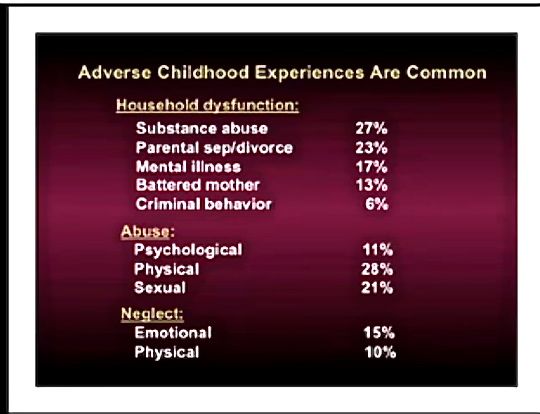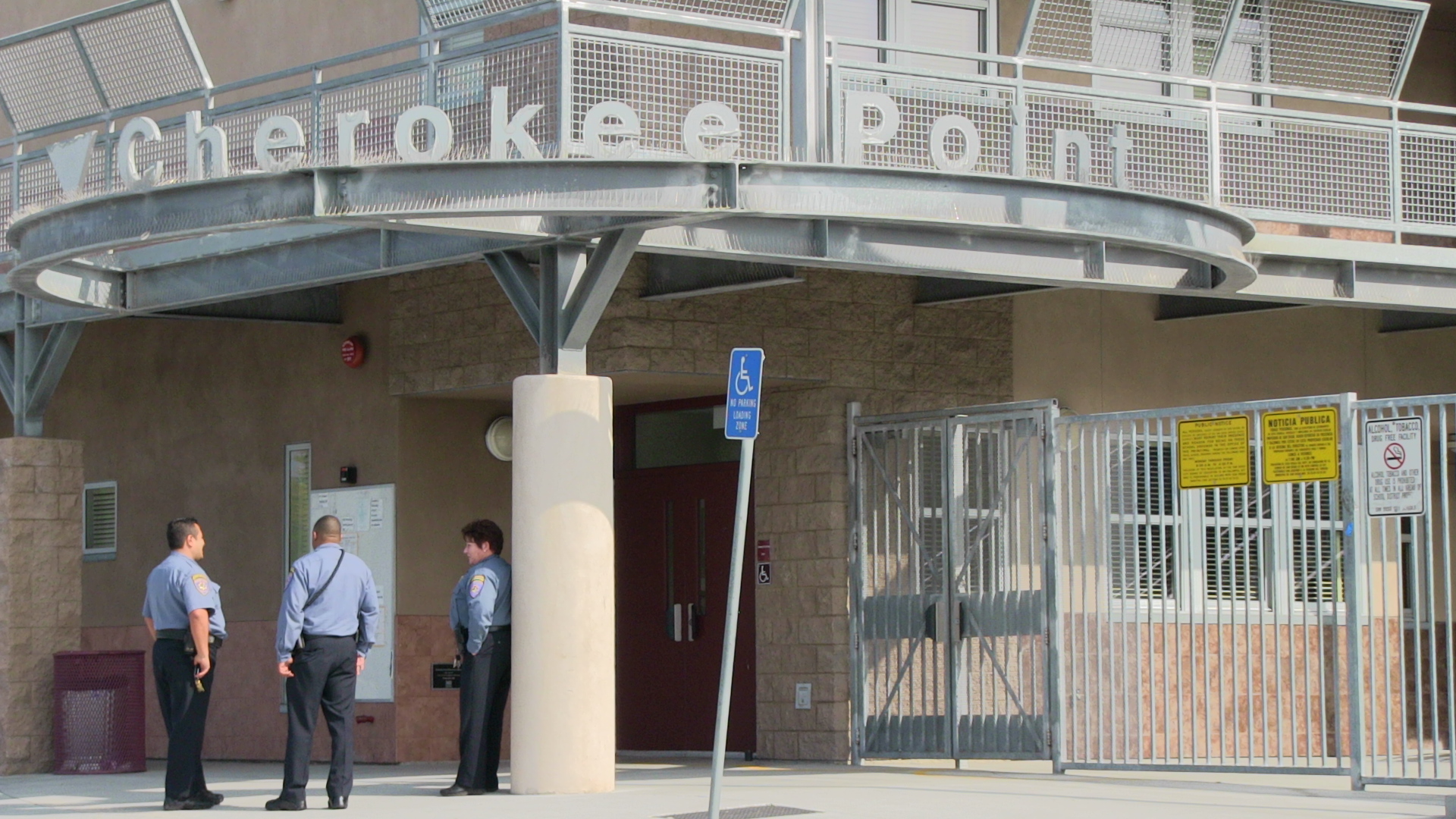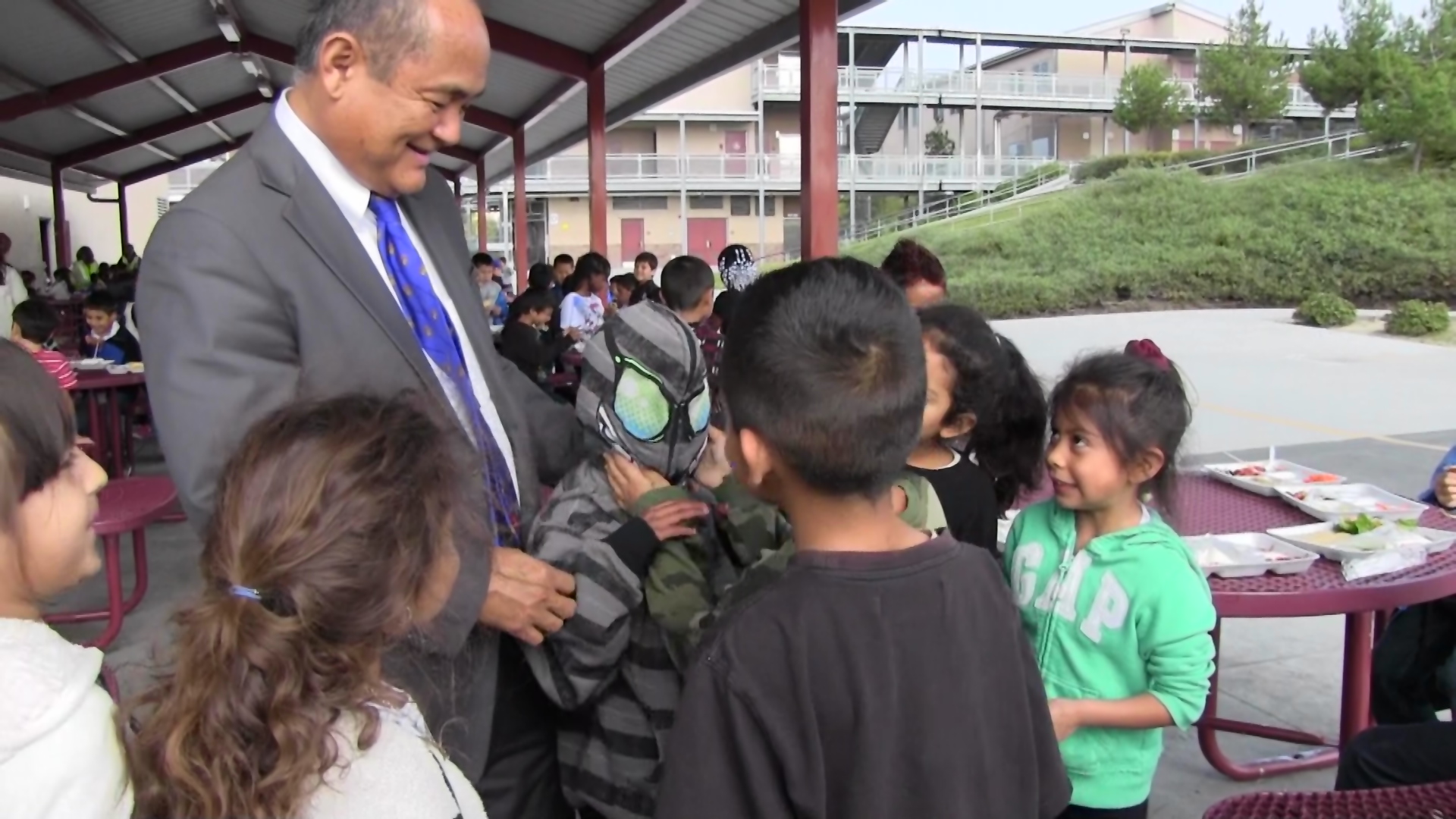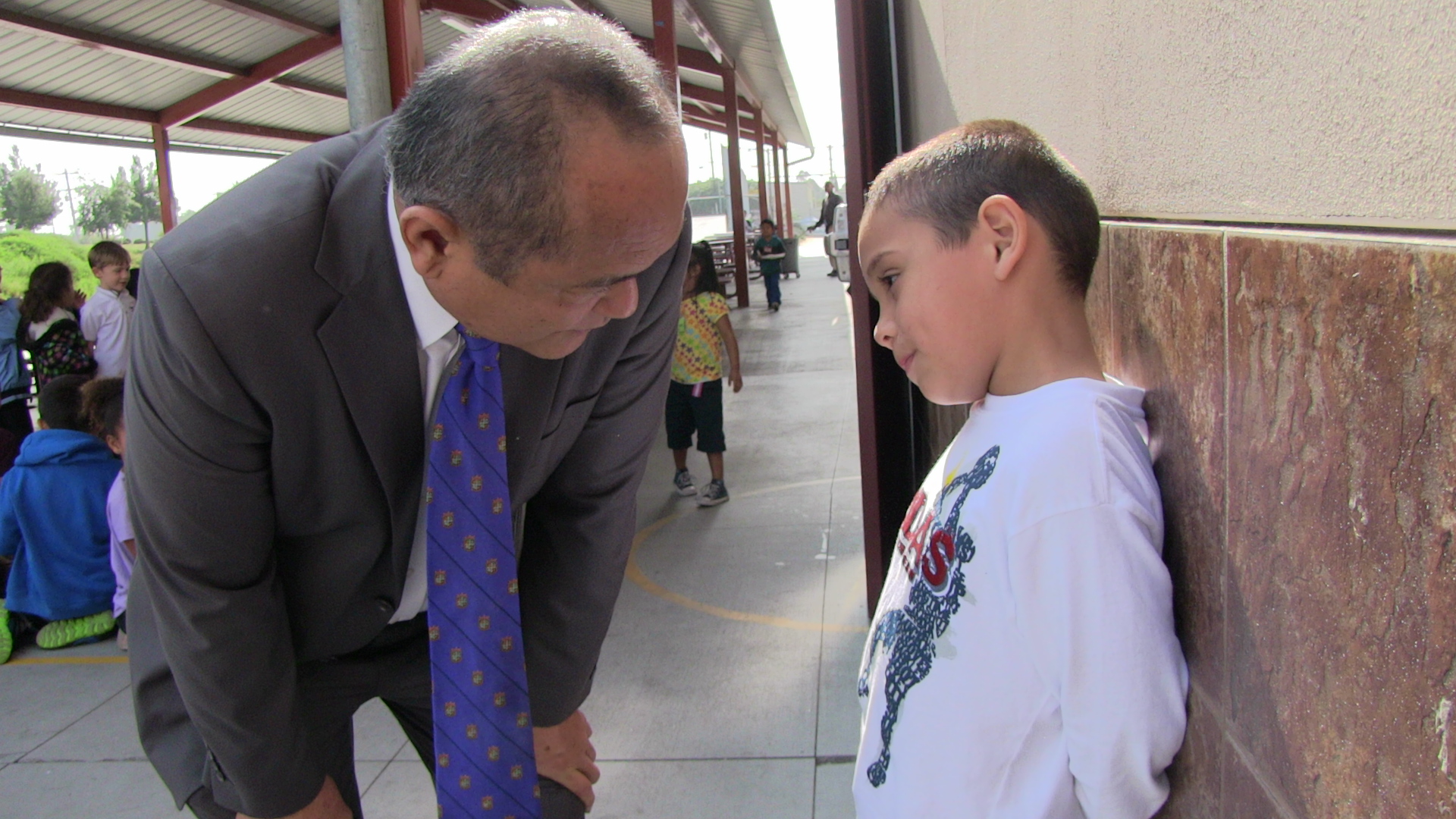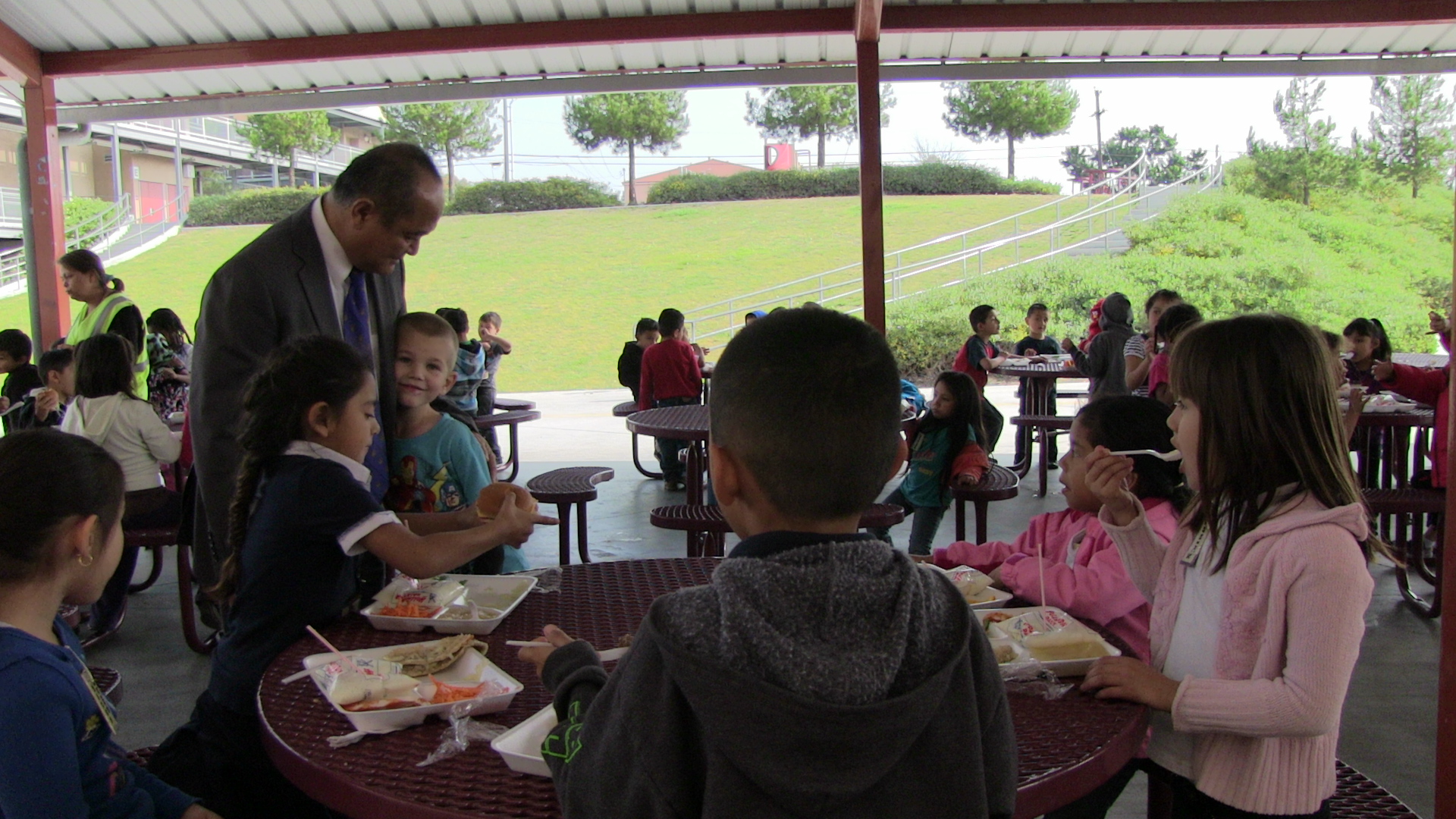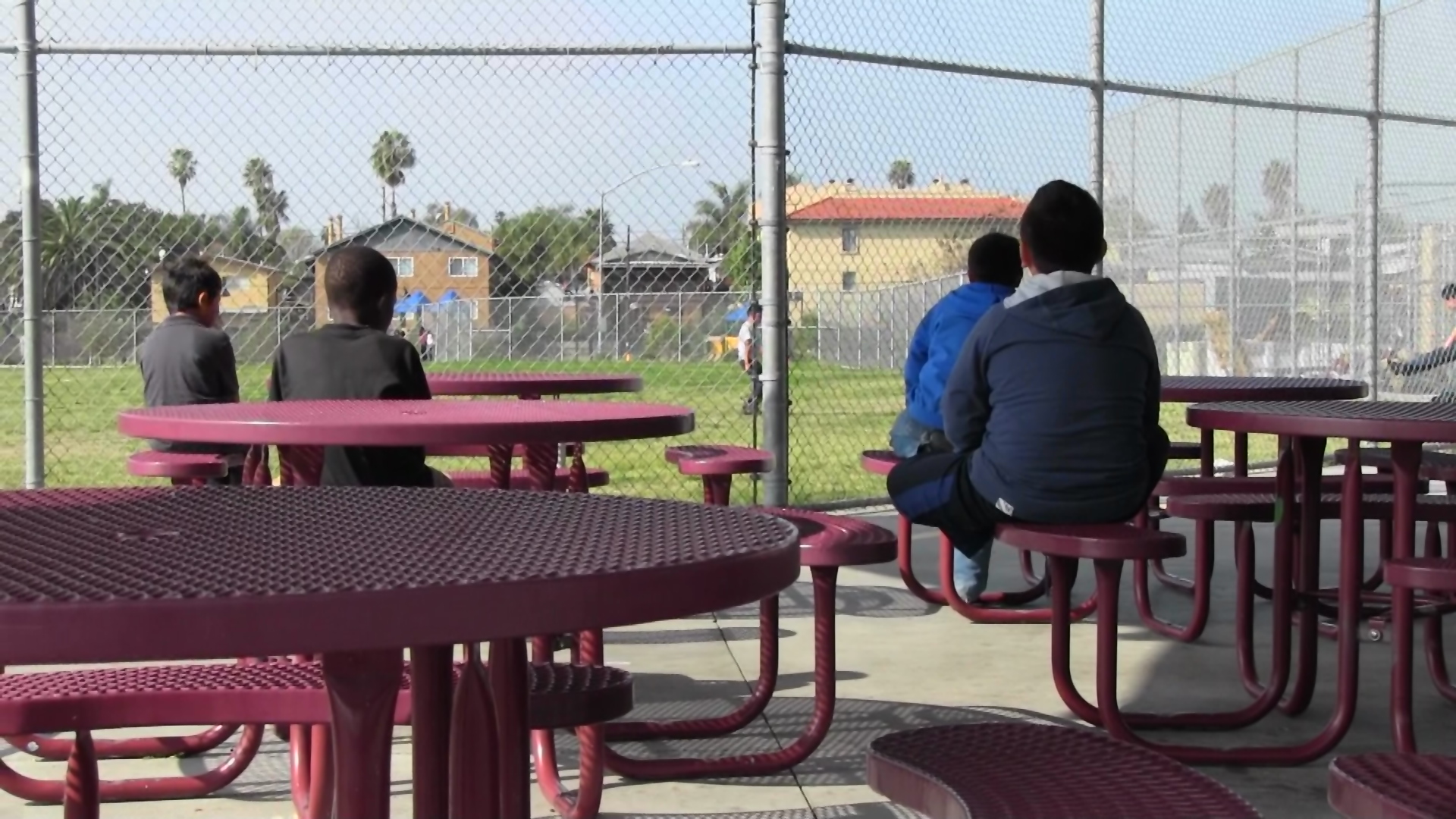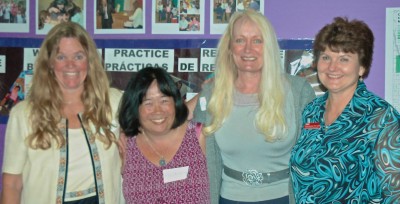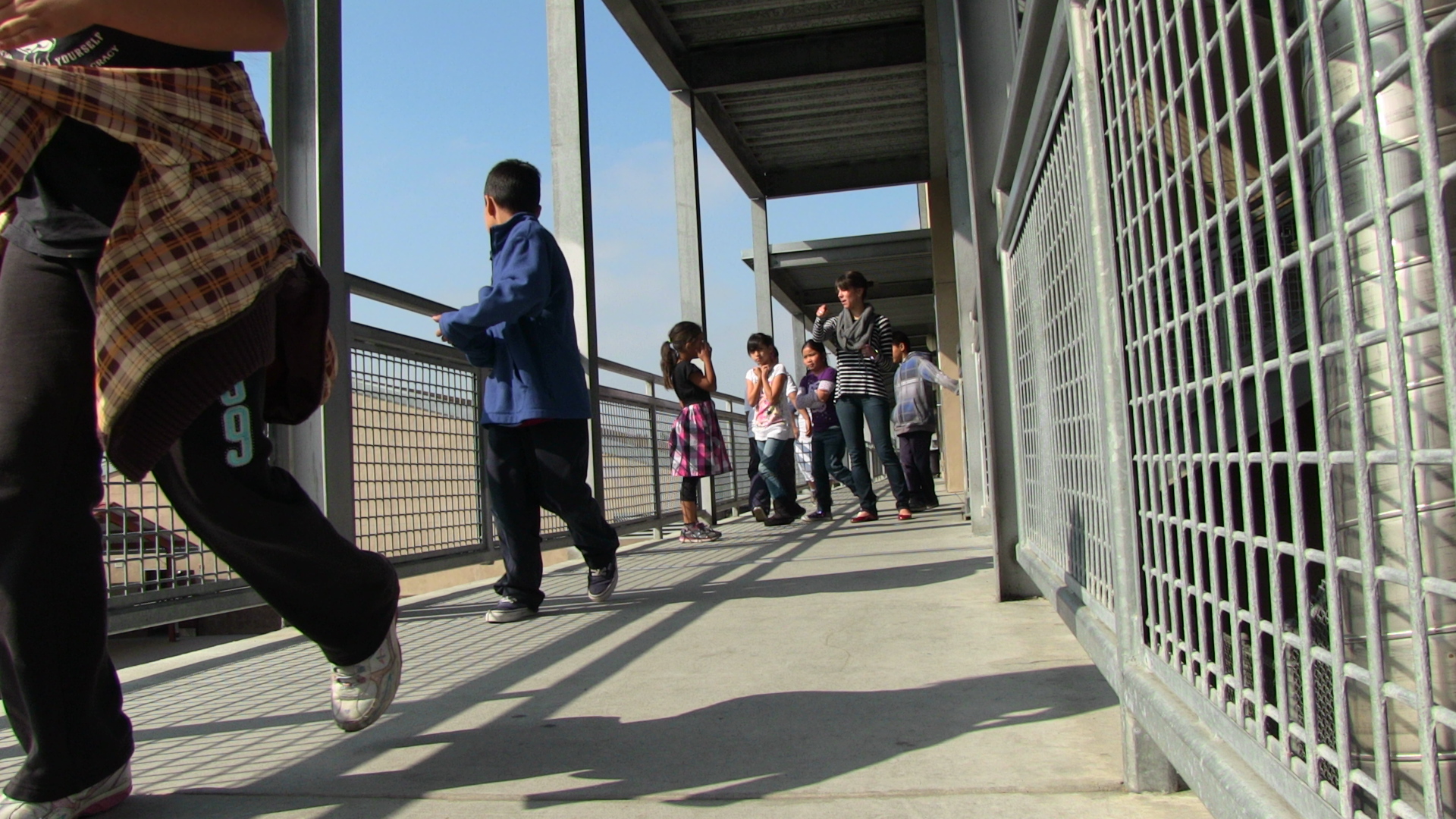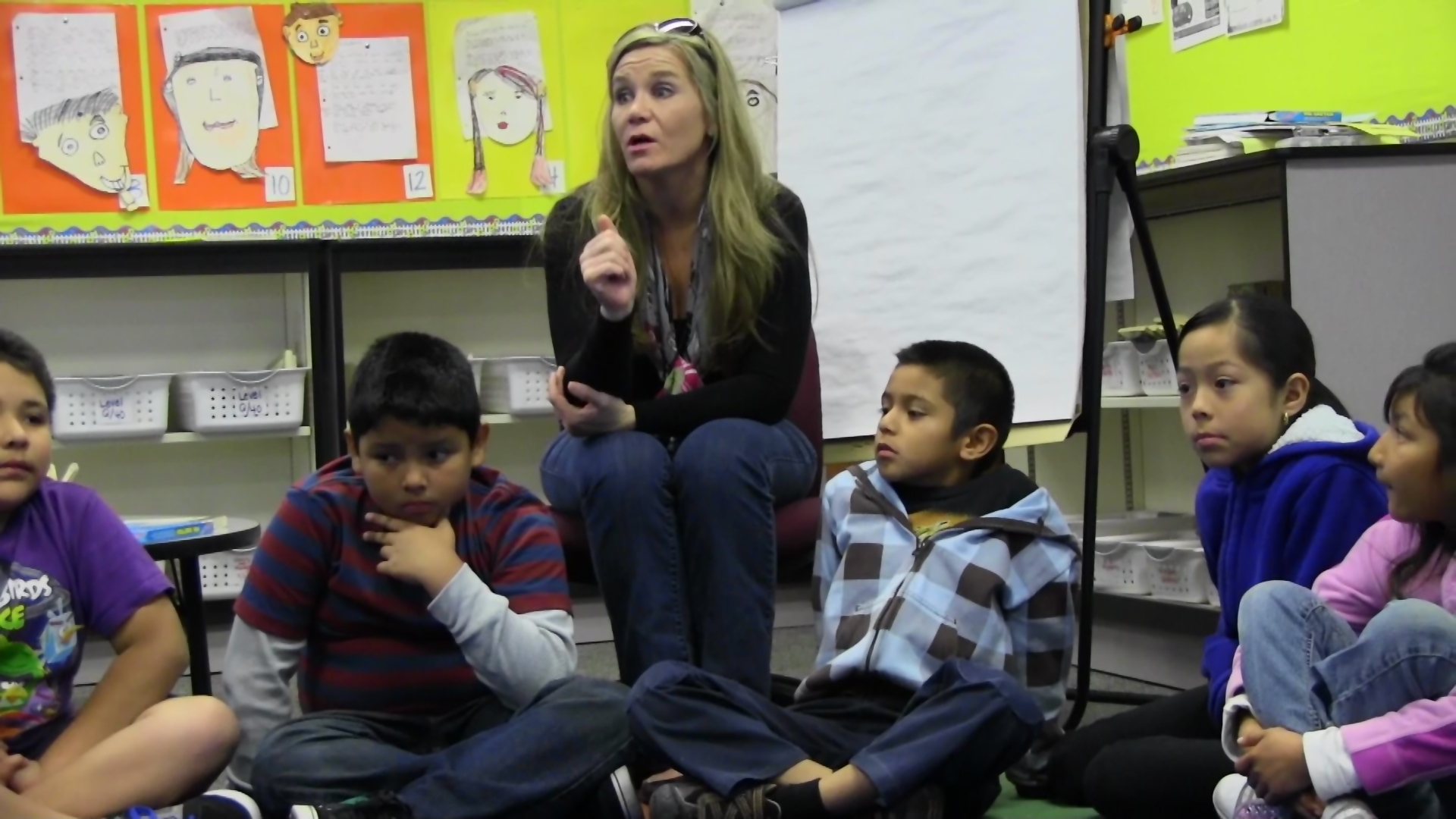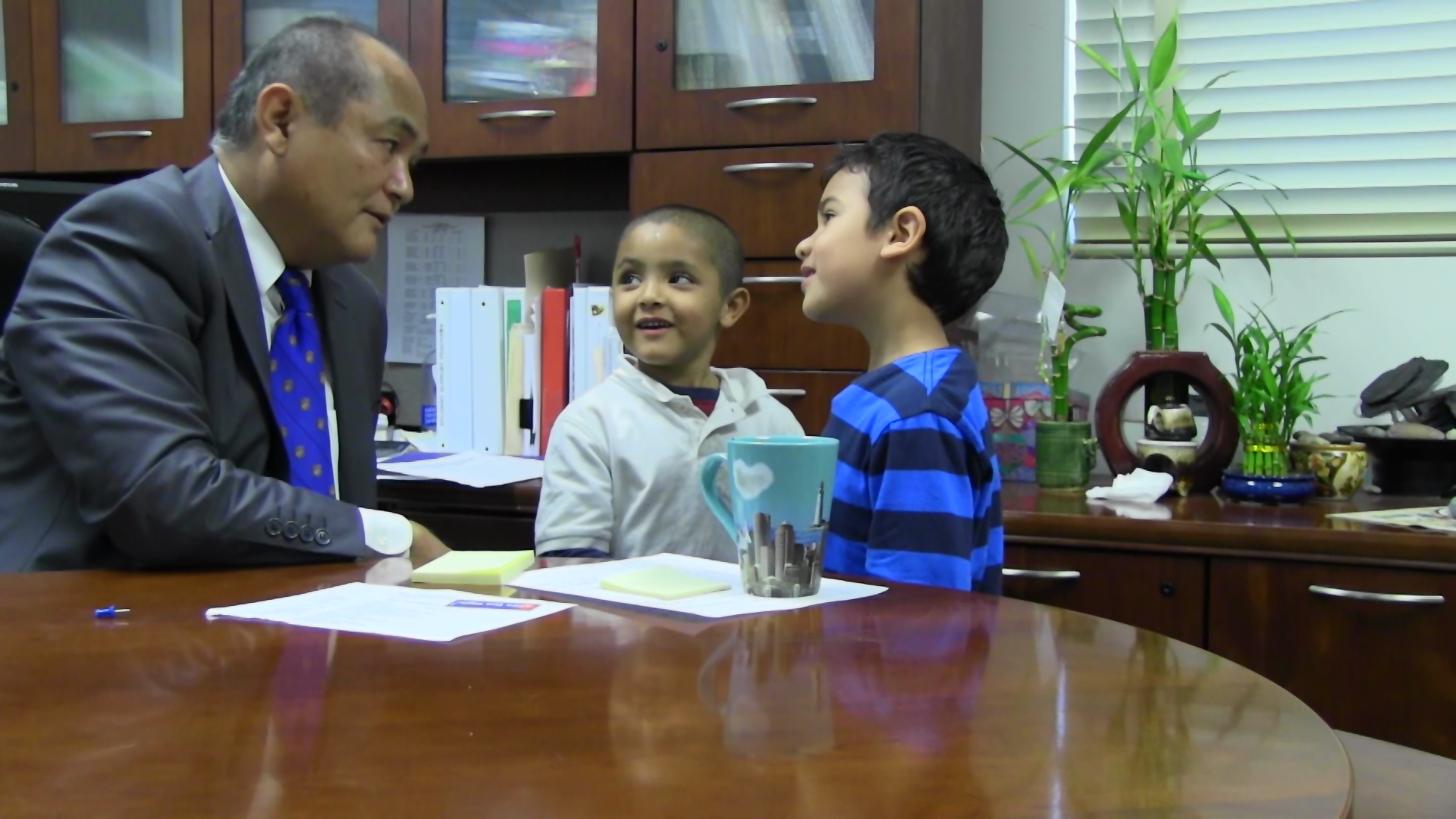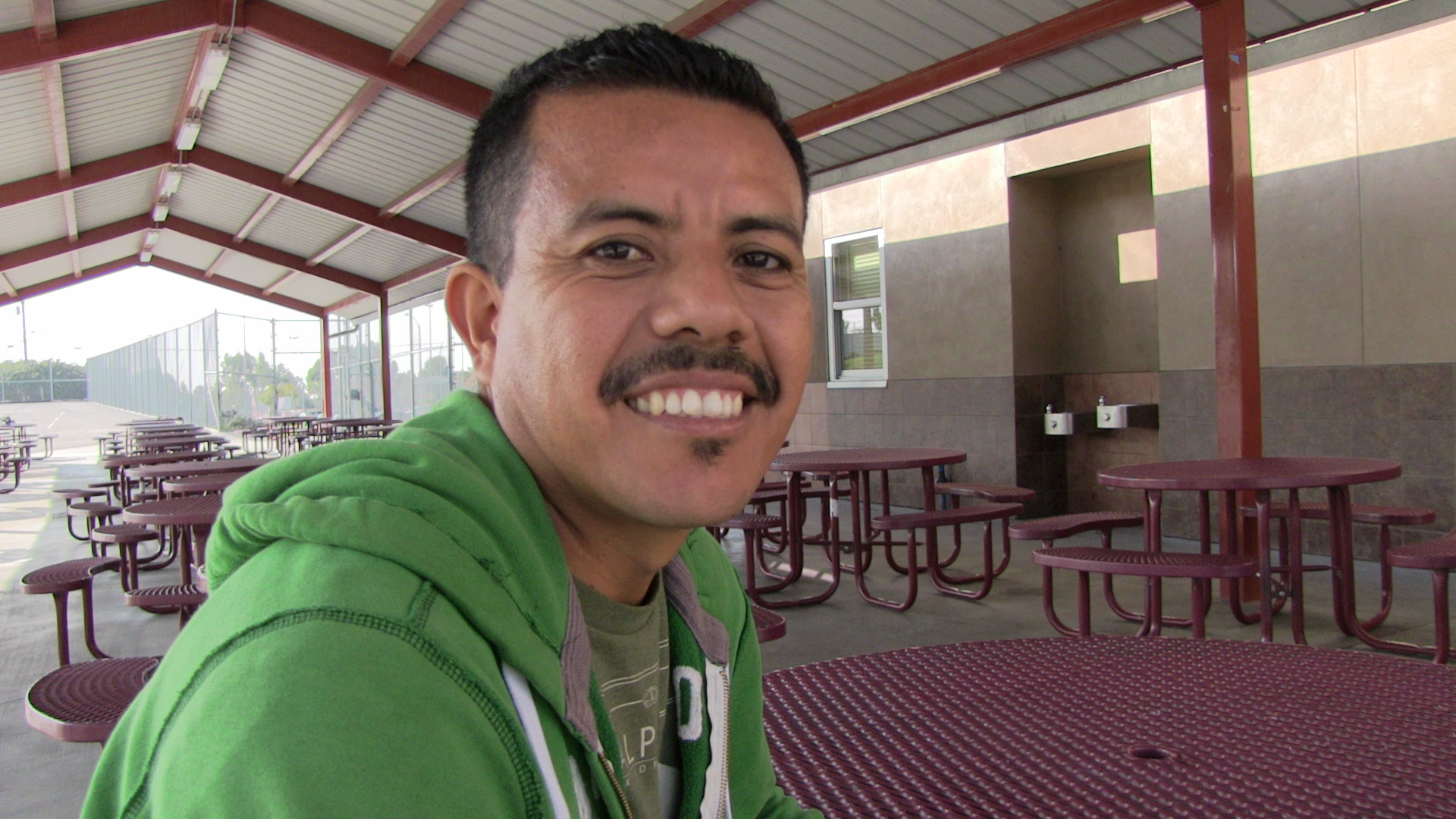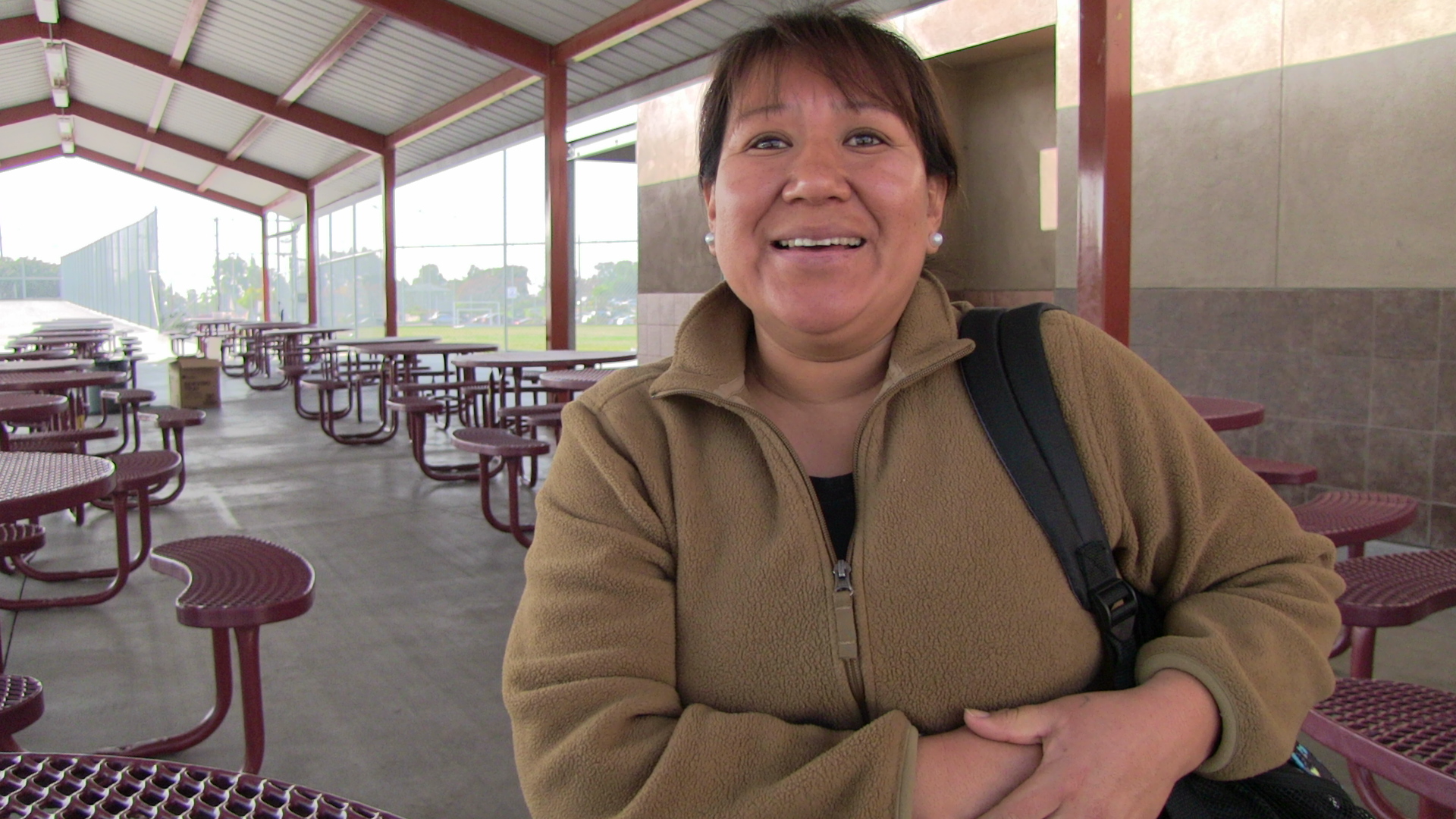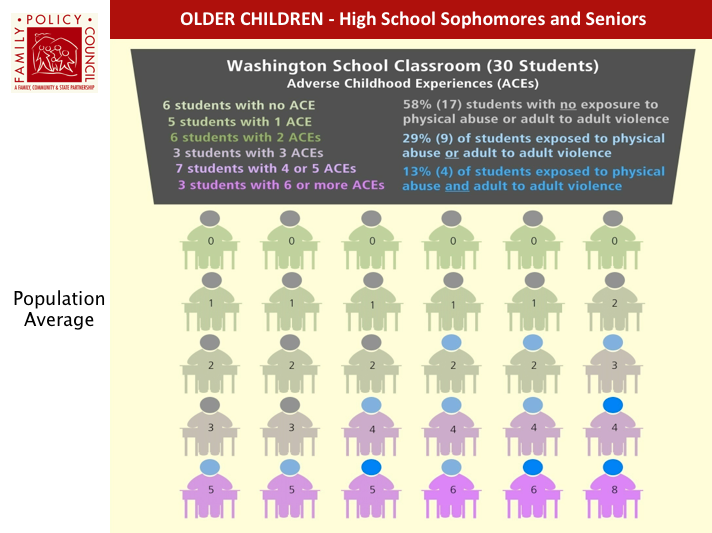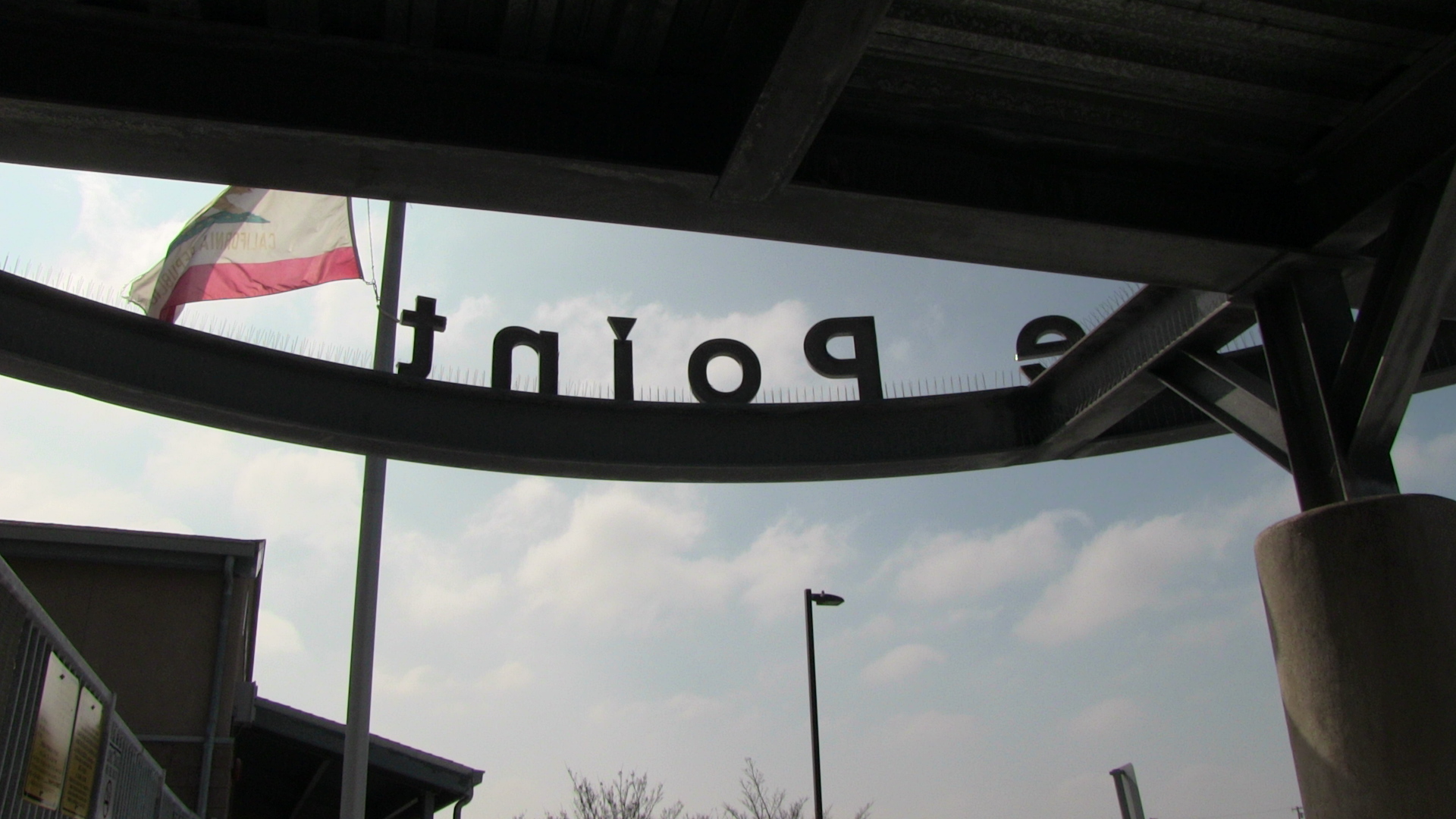What does ANY of the following POSSIBLY have to do with school discipline?
- Every day at 7:40 a.m., all of the school’s 570 children start their day by eating a free breakfast. In their classrooms. With their classmates.
- Every other week, the San Diego Food Bank drops off 4,000 pounds of fruits or vegetables for families of students, and another 12,000 pounds every month for the community. Nothing goes to waste.
- Once a year, all 570 children have their eyes tested, their teeth checked and a physical. Eyeglasses are free. They and their families have access to free counseling services.
- Every Friday, 100 backpacks loaded with healthy snacks go home with 100 kids (with their parents’ permission). Teachers select
 the kids who always seem hungry, who ask for seconds at breakfast and lunch.
the kids who always seem hungry, who ask for seconds at breakfast and lunch. - Parents are everywhere. Joking with the school office staff. Assisting teachers in classrooms. Monitoring kids on the playground. Chatting with each other in the parents’ room. Attending English classes. Computer classes. Parenting skills classes. Health and safety classes. Zumba classes.
- In the auditorium after school, fourth and fifth graders work with students from nearby high schools and the university; student teachers; parents; and local community members on a leadership training exercise. The program is so popular that the kids who participated last year refuse to stay away.
So what DOES any of this have to do with school discipline?
At Cherokee Point Elementary School in the City Heights district of San Diego….everything.
______________________________
There are those who cling to the notion that suspensions and expulsions work. They think that no good can come of a compassionate school because in it, kids run wild, cuss at teachers, and pay no attention. Some children just need harsh discipline.
This story about Cherokee Point isn’t really about a school that’s doing away with suspensions and expulsions. It’s a story about people in this school and this community who are creating an environment where suspensions and expulsions are. Just. Not. Necessary.
This story is part of a series about trauma-informed schools. The kind of trauma we’re talking about is the kind people usually don’t like to mention — physical, verbal and sexual abuse; physical and emotional neglect; a parent who’s an alcoholic, addicted to drugs or diagnosed mentally ill; a family member in jail; a mother who’s battered; loss of a parent through divorce or abandonment.
The CDC’s groundbreaking epidemiological research, the Adverse Childhood Experiences Study and subsequent other studies found that those 10 types of severe and chronic childhood trauma up the risk – by 100 to more than 1,000 percent, depending on the number of ACEs or types of trauma — of the adult onset of major chronic diseases…diabetes, heart disease, cancer. It also increases the chances of being violent, a victim of violence and becoming chronically depressed. Brain research revealed one of the reasons: the toxic stress of this trauma damages the structure and function of a child’s brain. Kids get anxious and can’t sit still; get depressed and withdraw; get angry and fight; can’t focus and stop learning. They cope with anxiety, depression, anger by drinking, smoking, doing other drugs, fighting, stealing, overeating, having inappropriate sex, and/or becoming overachievers on their way to becoming workaholics.
In the white middle class, ACEs are as common as salt. In areas of high poverty, they’re as ubiquitous as water. The scientific term for “common as salt” and “ubiquitous as water” is “epidemic”.
The CDC’s Adverse Childhood Experiences Study of 17,000 mostly white, middle and upper middle class employed San Diegans with great health care showed that childhood trauma is very common.
_______________________
Trauma-informed schools implement practices that prevent childhood trauma and that stop further traumatizing already traumatized children or adults. One result is drastically reduced suspensions and expulsions, but that’s only part of the impact.
A question: Based on the CDC’s ACE Study and on the research on the effects of toxic stress on children’s developing brains, would you expect all schools to incorporate trauma-informed practices?
I’ll ask that another way: Based on the research on the effects of earthquakes on structures, would you expect all construction engineers to incorporate seismic engineering practices when building bridges in California?
Let’s get this out of the way: Suspensions and expulsions don’t work
The research is irrefutable: Suspensions and expulsions don’t work. They’re just ugly symptoms of school systems lurching down the zero-tolerance road to nowhere, of adults clinging to a broken educational system that emphasizes test results above making sure every child has the opportunity to learn, and of racism embedded into our systems like dog hair into a fabric couch.
Godwin Higa became the principal of Cherokee Point in 2008. He suspended seven kids during that school year. Seven children. That doesn’t seem like too many. But those kids joined 160,733 other elementary school children suspended in California in 2008. Another 1,422 were expelled.
For many of those tens of thousands of children that year, life — already menacing — bared its teeth and turned on them. When principals kicked out them out of school, they landed on the road to the juvenile justice system, to the special education system (with its own high suspension rates), and/or to dropping out of school.
On those grim and sad journeys, kids give up hope. A study of 2,000 teenagers in the Pierce County, WA, juvenile justice system found that one-third of the teens with the most troubled childhoods were first kicked out of school before they were nine years old. Suspending or expelling child who’s eight years old or younger says way more about us adults and the abusive systems we’ve created that harm children than it does that kid.
A principal, his school, its community, and the wrong question
If you’re the principal of Cherokee Point Elementary School, it probably helps if you’ve experienced hardships akin to those of the parents of the children who attend your school. Sixty percent of the 80,000 people living in City Heights’ 16 neighborhoods are low-income – their median income is $25, 814, compared to San Diego County’s $59,591. Eighty percent are people of color; more than 70 percent are immigrants — from Somalia, Vietnam, Cambodia, Burma, Mexico and several other countries in Central and South America. They don’t speak English or don’t speak it well.
Cherokee Point Elementary School in City Heights, San Diego, CA
_____________________________
Higa’s parents divorced when he was two years old. His mother raised him and his five siblings by herself. “Dad was completely out of the picture,” he says. His mother worked three jobs. She bought discounted damaged canned goods. The family lived in a small house on his grandparents’ hog farm on Oahu, Hawaii, where caring for the 400 hogs was part of the kids’ lives as soon as they could haul water. His mother died when he was 16. “We were pretty much on our own then,” he says.
The experience helped him develop a solid work ethic and compassion, he says. He knows what it’s like to live through a childhood that’s off-balance. He can look in the eyes of his students’ parents and see their pain and their pride. “It has influenced me a lot as a leader,” he says.
Every day, Higa moves purposefully around the modern, immaculate campus of Cherokee Point, part of the San Diego Unified School District. He’s an insistent presence everywhere – in classrooms, in the lunch area, on the playground. He has an easy smile, a quiet voice, a gentle hand. As he makes his way around the school during lunch or recess, kids swarm to him: “Mr. Higa! Mr. Higa!” They tell him of an accomplishment, any accomplishment, small or large. They want that smile. They want the comfort of that hand on their shoulder or head.
Godwin Higa helps a boy try on a Spiderman hoodie.
____________________________
But Higa’s no pushover. He watches everything. He sees everything. He tolerates no abuse from child, teacher, staff member or parent. What’s abusive? For starters, yelling in anger at a child. He quietly calls out to a kid who just shoved another in line and barely shakes his head. The boy whips around, hugs the kid he just pushed, and shrugs an apology to Higa. “That boy’s dad is in the military,” Higa says. “Dad was just deployed again. Whenever dad leaves, the boy acts out.” If Higa doesn’t know the story of one of the 570 children, from pre-K to 5th grade, somebody else does.
When a child gets in trouble, Principal Godwin Higa, talks quietly to the student to sort things out.
___________________________
Many of the kids from the Cherokee Point neighborhood come from families under a lot of stress, he says. Families with domestic violence. Neglectful families. Severely traumatized families. Military families where dad or mom keeps going off to a scary war. All of the school’s families are low income. They struggle to put enough food on the table. A trip to the dentist is a luxury.
So, Higa knows things. And the kids intuit that Higa knows. He knows that if you’re hungry, you can’t concentrate. If your tooth aches because it’s infected, you can’t learn how to spell. If you’re terrified that the kid sitting behind you will attack you on the playground, you can’t focus on math. If you can’t see, you can’t read what the teacher is writing on the board. If your parents don’t understand what you do at school, they won’t be able to help you get a good education. If your mother is too scared to call the police when your dad beats her up and slaps you around, you’re likely to be too frantic about her safety and yours to focus on much of anything.
It takes Principal Godwin Higa a while to walk through the lunch courtyard. Every few steps, a child runs up to talk with him.
____________________________
He knows that what happens to you at home or on the way home can make you want to shove or hit another kid in anger and frustration, to yell at a teacher, to jump out of your chair because you’re too anxious to sit still, to fall asleep at your desk because you were up all night listening to your parents fight, to be too afraid to talk because the world looks like a very scary place, or to not pay attention because you just can’t focus.
The whole child. The whole child. Those three words pepper Higa’s sentences. If you don’t know and understand the whole child, you’ll never be able to teach that child.
A kid didn’t turn in his homework? It’s not because he doesn’t want to. “We need to know if that child rides the bus for 45 minutes each way,” says Higa. “If he has to dodge bullets in his neighborhood. If both parents work two jobs. If he has to cook supper and take care of his siblings until late at night, the last thing he’ll do is homework.”
Higa came to his epiphany about 15 years ago, when he was a teacher practicing a new method for helping students learn to read. The teacher sits next to a student, listens and watches them read, notes what’s missing, and helps the student on the part that she’s struggling with. “I was taking notes, and that’s when I said, ‘You know what? A teacher really has to understand where the child is at before moving to the next step.’”
Seems like a no-duh, right? But it’s not how most of education works today. If children can’t fit in and keep up within the established system, they’re led to think it’s their fault, they’re given bad grades and sometimes labeled “slow learner”, “unmotivated”, “undisciplined”, “willful”.
Instead of making the child conform to the system, Higa began, in small ways, to change the system to conform to the child – to help the child move into a place where she or he is ready to learn. It’s the only way to create life-long learners, he believes, an absolute necessity for these kids who, during their lifetimes, will have dozens of jobs and will need to learn new skills that aren’t even on today’s radar.
“Our job is not only to teach, but to understand children so well that we teach them based on their needs,” he says.
To do that, educators have to build a solid trusting relationship with a child so that they can ask questions. Is there a problem at home? Are there medical problems? Is the child is being abused? Does the child have enough to eat?
When Higa arrived at Cherokee Point, he implemented the basics. Only a few kids were taking advantage of the free breakfast in the auditorium, so he applied to join Breakfast in the Classroom, and a meal became the first thing all kids did at school. The results were immediate, says Higa: Visits to the nurse with complaints of sore stomachs and headaches plummeted, fewer kids fell asleep, more engaged energetically with the lessons.
Other basics: He arranged for food bank deliveries for parents and health checkups for kids. Parents can come to the school anytime, can talk with him whenever they want. He began opening up the school between 5:30 and 6 a.m., so that kids who were dropped off early by working parents could come inside instead of waiting outside a locked gate. He began documenting teachers who were abusive to students.
But the real turning point came in February 2011. In 2010, the California Endowment had launched Building Healthy Communities, a 10-year, $1 billion campaign in 14 California communities. [Note: the California Endowment funded this series of stories, but they didn’t know which schools would be part of it.] City Heights was chosen as one of the communities. Among the issues the community wanted to solve was how to increase peace in the high-crime community, including in its schools.
If a child misbehaves, it’s a teaching moment. But there are also consequences — such as having to watch instead of play.
______________________________
Drs. Colette Ingraham, Audrey Hokoda, and Gerald Monk — three professors at San Diego State University — worked with the City Heights community to develop a two-year $684,094 pilot project at Cherokee Point called the Wellness and Restorative Practice Partnership (WRPP), which the California Endowment funded. Its members include parents, neighborhood residents, youth leaders, administrators and teachers who live in City Heights.
The project focuses on four overlapping and integrated areas:
- School climate — Create a school that promotes a culture of care, a sense of belonging and positive relationships.
- In-school and in-home health — services for parents, including education, domestic violence counseling and restorative practices.
- Youth leadership
- Restorative practices and restorative justice in the community.
“I really like this grant,” says Higa. “I was doing a lot of this with very little support. This has exactly the philosophy I have and I’m trying to instill in the school.”
Two years in, the school shimmers with vitality wrapped in an enthusiasm for learning that pops up everywhere: in kids’ classrooms, the parents’ room, the computer lab, the auditorium, the playground. Also, it’s easy to tell that the kids feel safe, in the sense that they know that trusted adults are watching them, watching out for them and committed to intervening. Higa encourages his teachers to learn their students’ stories and to pay attention to changes in behavior. “I tell them: Watch the students. Notice if she’s not talking much. Or if she’s angry today. Watch for all of those things.”
And now that they know a student will receive help, the teachers are willing to do so. Is a child hungry? Homeless? Being abused? Witnessing domestic violence? They can refer children – and their families — to wrap-around services: health, counseling, housing, anger management, tutoring, etc.
“As teachers, we’re required to meet a student’s academic needs,” says Patty Wallach, a former fifth-grade teacher who’s now the in-school resource teacher. “But if their social and emotional issues aren’t met, it’s hard to meet their academic needs.”
Teachers have also received training in how to intervene earlier, before behavior issues erupt into classroom disturbances, to encourage a child who isn’t participating, and to teach children how to regulate their own behaviors.
The results? In 2012, teachers referred 46 children to see Higa. In 2013, that number dropped to 20.
And so far, during this 2012-2013 school year (this is a year-round school whose term ends this month), Higa has neither suspended nor expelled a single student.
So, with all these changes, have the school’s standardized test scores improved? No. But, as Higa will tell you: In a school oriented toward the whole child, that’s the wrong question.
To get along in the modern world, well…you have to learn to get along
Seventeen eight and nine-year-olds sit cross-legged, shoulder-to-shoulder on the carpet of their third-grade classroom. Teacher Wendy Lindman-Fechner is leading the daily circle discussion. This morning, they’re setting their personal goals for the day. Each student works with a partner.
After a few minutes, Lindman-Fechner asks the class: “Let’s hear what you were working on.”
Wendy Lindman-Fechner guides her third-graders in a discussion of personal goals during their morning meeting.
La Near says that his goal was to be responsible for his actions – to keep hands and feet to himself. “To be responsible for your actions,” echoes Lindman-Fechner. And the suggestions for strategies?
Putting his hands behind his back. Controlling himself. Thinking before he does something.
They run through a couple of other students’ personal goals – being an active listener, using the restroom at an appropriate time so as not to miss anything important in class.
Lindman-Fechner says: “I like how you’re helping each other. All day long, think about your personal goal. It’s okay to remind each other. Do it in a polite way. What’s a polite way?”
Riego raises his hand. To the person whose goal it is to be an active listener, he suggests saying: “Excuse me. You’re supposed to be paying attention to me.”
[Click on any photo to start a slide show.]_________________________
“Remember, we can control what we do. We can’t control other people. We can only remind them. Very nice. Good job,” Lindman-Fechner says. “Let’s do some problem-solving now. We had a problem at recess yesterday. What was it?” Hands raise. She calls on Max.
“Tripping people, pushing and grabbing when we have the ball,” he says.
“And what are the solutions for pushing and grabbing for the ball?” she asks.
“Use your words,” to ask for the ball instead of shoving or grabbing, says one student.
“Be more respectful,” says another.
“What about the tripping?” continues Lindman-Fechner. “That sounds like bullying to me. And that’s a really big issue. What can we do?”
One girl says: “It hurts my feelings!” Some of the other kids nod. Lindman-Fechner acknowledges: “It does hurt your feelings.”
Eduardo offers: “Talk to an adult.”
Lindman-Fechner asks: “Can you talk to the person first?”
“Leave the situation,” another student offers. The teacher nods. “Are there lots of other things to do at recess? Could you play four square, or wall ball? Let’s try those strategies.”
The discussion is matter-of-fact, non-judgmental. There’s no shame. No blame. It’s more along the lines of: Here’s a broken shoelace. How do we fix it? And if the fix doesn’t work, we’ll figure out another approach.
When these children are adults, they will need to work together in their jobs and communities. If they want to participate and influence change, they need social skills and tools that help them control their own emotions and actions. “They can’t just shout and scream and get angry in public meetings,” says Higa. “People don’t want to listen to you.”
Shortly before the WRPP grant was put together, Higa attended a workshop about the use of restorative justice and practices in education taught by the pioneers in the field, Ron and Roxanne Claassen. When Higa introduced the program to the teachers, they jumped on it.
“Because of our work on understanding the whole child, many of the teachers were doing similar things,” he says. “The process was in place, but the structure provided by restorative practices was something new for them. It was easier to train the kids using that type of structure.”
[Click on any photo to start a slide show about the Pathfinders — fourth- and fifth-graders who learn to become peer mediators.]______________________________
Fifth-grade instructor Mark McGuffey and five other teachers reviewed both Claassen books – Discipline That Restores and its accompanying workbook, Making Things Right. They developed an approach that was more appropriate for elementary school students. It’s now used every day in every classroom at Cherokee Point, from kindergarten to 5th grade.
“My masters’ thesis was about why students have the same problem over and over and never get better,” says McGuffey. “That’s because we tell them to act right, but we never show them how. We never teach them skills.” Now he is.
When he began teaching the “Peace Path” – the five steps to resolving conflicts in his classroom — he wasn’t sure that the students were absorbing anything. The steps are:
- Recognize the injustice by establishing what happened, listening, accepting responsibility for what happened, telling each other how each feels about what happened and repeat this back to the other person.
- Repair the harm by apologizing and agreeing not to engage in the behavior again.
- Develop future solutions by working out a plan to prevent the conflict and to defuse it if it arises again.
- Summarize, agree and congratulate each other.
- Then follow up to see if the agreement is working.
Then, one day, his students returned from recess and told him they’d had a class meeting on the playground to resolve an issue. It bowled him over. Many students have told their parents about the process, and are now using it at home to resolve conflicts. “They’ve got a skill set they’re taking outside the school,” says McGuffey, waving a ragged copy ofDiscipline That Restores; a flurry of yellow stickies protrude from the pages.
[Click on any photo to see slide show of the students who participate in Youth Leadership part of the WRPP grant.]But, like anything new, the process can take three steps forward and two steps back. A few hours after our initial conversation on the day that I visited the school, McGuffey stops me. “Just when I think they’ve got it…” He shakes his head. “This afternoon they had a big blow-out. So we have more work to do.”
When parents learned about this, some of them surprised SDSU graduate student Daniel Ramirez, one of a group that’s working with teachers to implement restorative practices, and teach social and emotional skills. The parents asked for the steps to be printed on a small sheet of paper and laminated so that they could attach it to their refrigerators. Hundreds have been distributed at parent workshops, the monthly principal chats and community events.
“We can use now use this with our kids,” the parents told Ramirez. “We don’t have to use the belt or the shoe. We don’t have to do what our parents did with us.”
Catching problems before they grow into suspensions or expulsions
Within the first 4 weeks of school (within the first 8 weeks for kindergarten), teachers identify the students who are having academic problems. This is another way of intervening early to prevent kids from becoming frustrated and dropping out or acting out.
Those who need more tutoring attend Academic Saturday school – four hours on each of 20 Saturdays during the school year – and summer school. It’s voluntary; the students’ parents have to agree to send them. Between 90 and 120 students attend Academic Saturday school and summer school. Higa says he tells them it doesn’t mean they’re failures – they’re learners.
“I tell them I went to summer school my whole life,” he says. “It’s about getting better.”
Because they tussled on the playground, these two kindergarteners were sent to the principal’s office. After going through the restorative practices exercise, they decided to become best friends.
__________________________
Academic Saturday school is also where kids go in lieu of being suspended. The first approach in dealing with kids who are acting out is for the teacher to spot the behavior early and address it right away, using restorative practices. Sometimes that can be done in the classroom, sometimes by stepping outside the classroom for a minute or two. When a child is having a particularly bad day and the teacher doesn’t have time to help the student, he or she is sent to Higa. Sometimes, the child calms down after talking with Higa for a while and returns to class.
For two children this year – down from 10 last year — Higa determined they needed to spend time with him in Saturday discipline school. For four hours, the kids stayed by his side to reflect on what they did and helped him do cleanup work in the community or on campus.
Alberto Arenas, a chef at the popular San Diego restaurant, C Level, has two boys at Cherokee Point. Since he works at night, he spends most days at the school, helping teachers and talking with other parents. “I just want to spend more time with my kids. I’m here for two hours. At recess time, I go outside and play with them. I think they feel more comfortable.”
________________________
“That’s when my connection with them starts,” explains Higa. “It’s my time to bond with the kids, to show them that we care. I start talking with them, asking them, ‘Why are you doing this? You made a mistake, now how are we going to make it better?’” After the community work, he has them explain in writing what they did and their plan for restitution. He also gives them academic help with their homework or assignments. Less than 2% of the kids return to Saturday discipline school, he says.
For students who need ongoing help, San Diego State University graduate students provide interventions and counseling. This year, they set up three counseling groups for 15 students to help them build social and resiliency skills.
Some children act out because they’re simply starved for attention that they’re not getting from their families. One group of kids who had severe attendance problems turned on a dime – they just needed quality time with a caring adult and to have fun while learning. “They couldn’t wait for the next day of school so they could meet with this group again,” says Ingraham.
Luz Vidal, who leads the school’s parents’ organization, has two children at Cherokee Point. “The school keeps us very well informed, and is always willing to have us here,” she says. She wants the school to help prepare her children to give back and help the community of San Diego, no matter what careers they choose.
__________________________
So, if the teachers are freer to teach, why haven’t the school’s standardized test scores gone up? That’s not the right question, says Higa – these are:
What language do these students speak when they come to Cherokee Point? “When you’re fresh from Tijuana, Somalia, or Burma,” says Higa, “English is a new language. When you take a test in English in the second grade, the scores are never as good as those students in a school who have spoken English their whole lives.”
How do the stresses of severe poverty affect children? Although domestic violence, verbal and physical abuse – three of the 10 types of childhood trauma measured in the ACE Study — are very common in all neighborhoods, low wages, unemployment, underemployment and generational trauma – trauma passed from grandparent to parent to child — multiply adversity in low-income areas. Living in a violent neighborhood, where children fear for their safety or witness violence outside the home, such as shootings or stabbings, just adds more toxic stress. Children in immigrant families may have experienced additional trauma, including war, witnessing their family members being raped or beaten, or may have experienced such assaults themselves.
Neurobiological research shows that toxic stress releases stress hormones that damage children’s developing brains. Kids need the stress hormones — a normal survival response — to remain hyper-vigilant to survive their dangerous world. When they’re triggered, their survival brain takes over and literally shuts down their decision-making and learning brain. So, in school, the slightest provocation — a teacher’s raised voice or another child accidentally bumping into them — may trigger them into fight, flight or freeze mode. They can lash out by yelling, punching, biting, or throwing chairs, or they can run away physically or retreat psychologically by withdrawing into a near-catatonic state. In any of these states, a child is neurobiologically incapable of learning. No amount of making the child work harder will change things. You have to put the child in a soothing environment and wait for him or her to recover and then begin to teach the child how to recognize and control her or his reactions and emotions. And if you want to stop re-traumatizing the child, you have to change the environment.
Dr. Chris Blodgett directs Washington State University’s Area Health Education Center. In examining the records of 2,100 elementary school students in Spokane, WA, he found that childhood adversity was very common, and had great impact on a child’s school life.
Compared with children with no adverse childhood experiences, kids with three or more ACEs were
- 3 times more likely to fail
- 5 times more likely to have severe attendance problems
- 6 times more likely to have severe behavior problems
- 4 times more likely to have self-reports of poor health
In other words, he says, the fundamental mechanism underlying a child’s ability to learn is exposure to childhood adversity. And systematic change — how a school, a family, and a community recognizes that adversity and builds resilience in and around that child — determines if the child can overcome the adversity.
Washington State determined that 13 out of every 30 students in a classroom will be experiencing toxic stress from 3 or more ongoing traumatic experiences. Those children are likely to be more “unruly”, more “unmotivated” or more absent than the others. Source: Washington State Family Policy Council.
________________________
Do most families have an academic language? For 85% of Cherokee Point’s students, in the language they speak at home, there’s a limited academic vocabulary, says Higa – e.g., no words for “homework” or “studying”. Most schools don’t even have the wherewithal to deal with these children or families – the traditional education system assumes that parents know what their children must do at home to keep up in school.
The starting point for these students is not the same starting point of students in schools that serve a middle-class or upper-middle class English-speaking community. It’s not that the students of Cherokee Point can’t eventually catch up, say the people who are involved in the school’s transition. They’re just as smart and talented as any other group of kids. But they need more resources and more time.
Higa believes that the new Common Core standards — which shift from multiple-choice testing to evaluating a student’s critical and conceptual understanding — will result in better educated students and a fairer evaluation of their skills.
“All these years, principals in high poverty areas have worked so hard only to be judged by a number,” says Higa. “It’s more important to go to the school, to see if the kids are happily learning and progressing. Are they comprehending and engaged? Are they being treated well so that they become learners for life?”
Bandaids v. prevention – on the road to becoming a trauma-informed community school
If the answers to the right questions are: “most”, “critically”, and “no”, as they are for so many schools, then a different approach must be taken to make sure that the educational system meets students at their starting points, and provides them the necessary support to learn academically, socially and emotionally. Otherwise kids will express their frustration, anger, helplessness and hopelessness in ways that guarantee them being suspended, expelled or dropping out.
Tens of thousands of schools across the U.S. are implementing all sorts of approaches to reduce suspensions and expulsions – PBIS, Safe & Civil Schools, restorative justice, community schools. Some are having great success; others less so.
A relative handful of schools have grounded these approaches in trauma-informed practices, i.e., looked at all of their policies and practices through a lens of the effects of toxic stress on children, and made adjustments where necessary. When Godwin Higa learned about trauma-informed schools this last year, he realized that he, the teachers and staff, and the SDSU professors and students were on a similar path. And City Heights itself was already moving in that direction by holding a couple of workshops about ACES and the toxic stress of trauma as part of their efforts to reduce community violence.
But, after he attended a workshop about trauma-informed practices, Higa and Ingraham decided that they wanted to ground the whole school in the science of ACEs and the effects of toxic stress on developing brains. They’ve changed the name of their project from Wellness and Restorative Practice Partnership to Trauma-Informed Community School. This will give everyone a broader perspective with which to work, says Ingraham.
It’s not that the school will stop teaching children social/emotional learning skills or restorative practices. Quite the contrary. Understanding the effects of toxic stress on a child’s brain, where behaviors come from and what triggers them “helps us understand what’s going on underneath the surface with the student and family as we’re trying to implement restorative practices,” Ingraham explains. In addition, Higa and Ingraham would like to do more prevention — implement more resilience factors and change the environment to prevent kids from acting out or withdrawing in the first place. They know that restorative practices do a great job at helping students who are acting out. But the students who respond to trauma by withdrawing don’t always appear on the restorative practices radar.
“Becoming trauma-informed really does help deepen our understanding of a child’s behavior in the classroom — why someone was offended or what caused them to react in such a way,” she continues. If the teachers and staff understand the physiological effects of toxic stress and that a child’s behavior is in response to trauma that she or he is experiencing, “it will help us respond in a more compassionate way.”
For the last two years, dozens of people – parents, community advocates, teachers, students, administrators, college students, graduate students, and university professors — have worked thousands of hours to lay the foundation for a compassionate school and community. It hasn’t been easy, and there are still many issues to address, including bullying, and, of course, making a transition to Common Core in a way that meets the children where they are. But parents are much more optimistic now than they were a couple of years ago that their children will graduate from high school, and they’re happy with the direction the school is going.
The infrastructure is fragile, however. It’s still dependent on the leadership, skills and personality of Higa, the daily involvement of SDSU professors and students, and the California Endowment’s funding. The community has yet to cement the changes into the culture. That’s another major goal for year three.
“We recognize that this needs to be sustainable,” says Ingraham. “And we’re focusing on building sustainable structures.” That includes developing leadership skills in parents, in teachers and in students so that they can continue to create the framework, systems and policies that support the way a trauma-informed community school works.
Then, they hope that suspensions and expulsions will be a bad memory. The school and community will work together to serve the community’s needs so that its children will be ready to learn. Teachers will meet children where they are and develop learning programs that adjust to their starting points.
Someday, maybe, compassionate schools will be like electricity. Something you take for granted. You don’t notice it until it’s NOT there.
Next: How is a trauma-informed school different from one that’s not trauma-informed?
Written By Jane Stevens
Guest Writer
This story was originally published @ http://acestoohigh.com/2013/07/22/at-cherokee-point-elementary-kids-dont-conform-to-school-school-conforms-to-kids/ and has been It has been syndicated by permission of the author.
The content and legality of the submission is the sole responsibility of the user responsible for submission. Submitted content does not reflect the views of Social Justice Solutions Inc. and has been posted in accordance with SJS’s terms of service and privacy policy.
______________________
This is part of an investigative series into “right doing” – how some schools in California are moving from a punitive to a supportive, compassionate approach to school discipline. The series includes profiles of schools in Le Grand, Reedley, Fresno, San Francisco, Los Angeles, and Concord, CA; Spokane, WA, and Brockton, MA. The series is funded by the California Endowment.
Sources:
Our authors want to hear from you! Click to leave a comment
Related Posts





